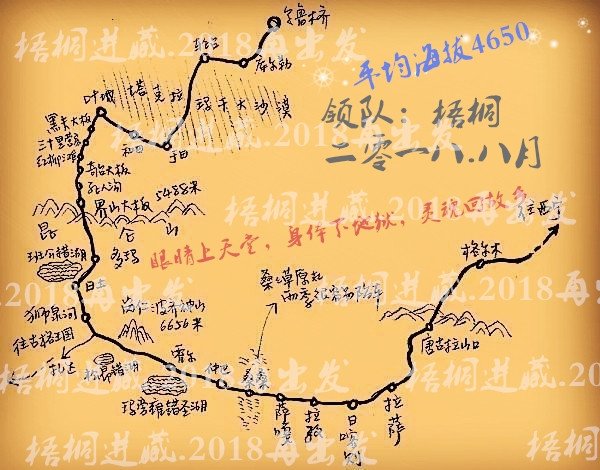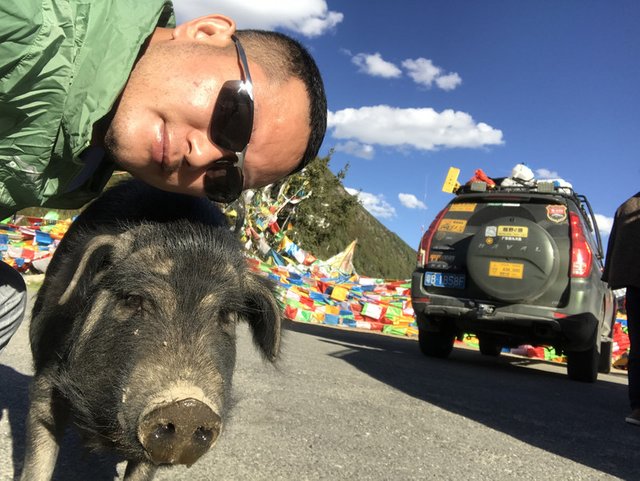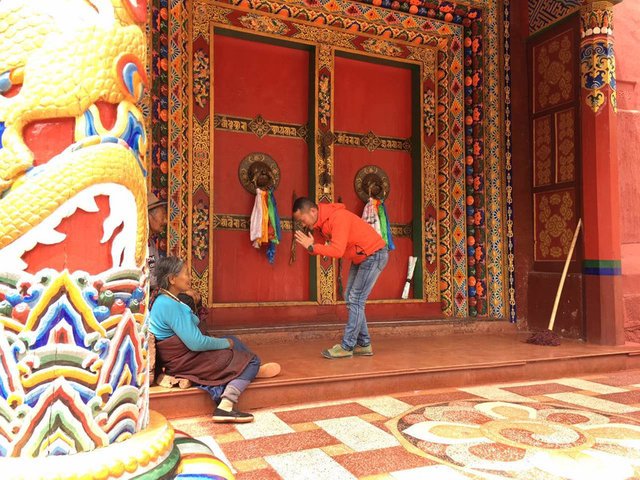Once in Tibet, I live forever. From then on, heaven is a passerby.
You can search online at will, there are 8 roads in the country to the hinterland of Tibet
(New Tibet Line, Qinghai-Tibet Line, Tang Fan Ancient Road, Sichuan-Tibet Northern Line, Sichuan-Tibet South Line, Yunnan-Tibet Line, Bingcha Highway, China-Nepal Friendship Highway), each entering Tibet Road, at different times, With its wonderful scenery, after many times entering the Tibet through the above-mentioned routes, this year, the new northern Tibet line is selected to cross the most mysterious and primitive western part of the country.
Shenzhen departs, all the way to the west, Lhasa trimming - deep into the earth's third pole, the polar heart, the temples of the gods - Ali 300,000 square kilometers no man's land;
Yanghu, Zhumulama, Qiaogeli, Mabianyi, Gangrenboqi, Pulan, 8000m peak Xixia Bangma, Zanda Tulin, Carola Glacier, Guge, Jieshan Daxie, dead Ditch, Jogori, Yecheng, Taklimakan Desert, Korla... unexpectedly;
In the middle of the world, the highest and farthest, the most ridiculous, the most oxygen-deficient, the worst road, and the most lonely road to the world's roof are filled with faith and stunning. And along the line are mostly empty no-man's land, which is a great test for the body and perseverance.

Preparation before departure:
Personal items
ID card and photocopy
Driving license
ID photo 1 inch alternate
Cash does not exceed 1W
Bank Card / Credit Card
Personal baggage
Try to wear worn clothes
Hat, sunscreen veil
Short sleeves, plus velvet jackets must be worn
Lightweight sneakers
Towels + toiletries + moisturizing
Sunglasses
With lid cup
eye drops (eye drops)
Electronic device charging cable for mobile phones, cameras, etc.
Eating supplies
Cigarette lighter with USB
Inflatable pump
Tire Screw Wrench + Jack
Water storage tank + oil
Trailer rope
Car roof rain bag, rope
Waterproof pad + tent + sleeping bag
Cookware, pots, knives and scissors
Disposable tableware
Dishwashing detergent, washing powder
Folding table
Clothing Rope
Garbage bag
Two or more walkie-talkies
Flashlight or headlight
Ties, electrical glue
Transparent rubber, double-sided tape
Replenishment along the way
Mineral water
Dry food
paper towels
Red Bull
Fruit

Special Reminder
Open Ali, Shigatse, Everest, Shannan, these places. Take two 1-inch photos, ID card, and apply for entry and exit.
Or find someone to do in Lhasa. For one day on weekdays, spend a little money.
Notes and local customs
Mysterious Tibet, in addition to the mysterious mountains of God and the holy lake, there are some customs and taboos that are full of mystery.
Tibet has a lot of precautions because of its ethnicity. Don’t touch these taboos when you travel to Tibet. Don’t cause unnecessary troubles. Students who drive into Tibet will stay there. Necessary and practical.

1. If you encounter livestock with hanging cloth labels in Tibet, don't drive them away, even if they block your road, because they are worshippers of the Tibetan people, don't hurt their gods; don't honk the animals on the road. Will irritate or scare them, causing collisions with vehicles and people.
2. If there is a local person who invites you to be a guest, please pay attention to entering the Tibetan people's room. Don't use your feet to step on the threshold, and don't spit in front of them. This is not only rude, they also feel unlucky.
3. If Tibetan children are yelling at you, don't be angry or insulted. It is not ridiculing or disrespecting you. On the contrary, it is a kind of respect and welcome to you. A courtesy.
4. Don't illegally buy all the animals in the Tibetan area to protect animals, such as the fur of wild animals, the horns of Tibetan antelope, etc. If you buy the equivalent of you are supporting their smuggling of wild animals, and once found to carry If you use these items, you will accept the investigation of the corresponding department, and the courier will not come back.
5. Don't help foreigners who have no formal procedures to enter Tibet, because Tibet is not only a tourist attraction, but also a military center of the country. Foreigners entering Tibet are subject to approval and must operate within the prescribed scope.
6. If you have a Tibetan child coming to greet you or play with you on the grassland, don’t touch the top of the child’s head with your hands. It’s very rude behavior in Tibetan areas, only the elders and sorghum can It is very important to touch their heads.
7. Going to some places, maybe someone will give you Hada. When accepting Hada, you should be pious. When we offer Hada, we must use both hands. Use both hands when toasting, smoking, and giving gifts.
8. Sanitary conditions in Tibetan areas are good in these places in the town, but the villages below are not good. But you can't urinate in the place of the cattle and horses of the collectors. These places are very clean in their hearts.
9. When visiting temples, pagodas and mani heaps, walk from left to right, and turn clockwise and economical when it is clockwise.
10. When you enter the temple, you must take off your hat and sunglasses. You can't just move the Buddha statues and related artifacts in the temple. Most of them are forbidden to take pictures.
11. Where there is a celestial burial, don't shoot, this is very taboo, don't give yourself unnecessary trouble.
——About high anti--
——What is the plateau, what is the status quo?
The altitude sickness is a natural physiological reaction that occurs when a person reaches a certain altitude and adapts to changes in air pressure caused by altitude, low oxygen content, and air drying. When the altitude is generally around 2700 meters, there will be altitude sickness. The symptoms of altitude sickness are generally manifested as: headache, shortness of breath, chest tightness, anorexia, emblem burning, dizziness, fatigue and so on. Some people appear because of low oxygen content: lips and fingertips are different in purple, drowsiness, mental excitement, and sleeplessness. Some people appear due to dry air: rough skin, chapped lips, nostril bleeding or blood clots.
Beginning into the plateau, you should not overeating, so as not to increase the burden on the digestive organs, do not drink alcohol and smoke, and do not exercise vigorously, so that it can adapt well to this environment.
To eat more vegetables, fruits and other vitamin-rich substances, drink plenty of water. Less bathing, special girls wash their hair,
Prevent colds caused by cold. The temperature difference on the plateau is particularly large. It is easy to catch cold and catch a cold. It is better to be hot. Don't be colder and wear more clothes.
Don't absorb nitrogen from the beginning, try to adapt to it yourself. Otherwise, you may never be able to inhale oxygen in the plateau (very dependent).
In the event of altitude sickness, there is no need to panic, depending on the extent of the response. If the reaction is low, you can take a rest, drink more water, exercise less, and usually disappear or weaken after a period of time.
Commonly used drugs to prevent altitude sickness: oxygen health, high altitude, muscle liver tablets, glucose, radix radix, etc., taken two days before entering the mountain, and also taken on the road, can effectively prevent mountain reactions. If you can adapt, you can drink some butter tea, which also has a certain effect on relieving altitude sickness.
The key to overcoming altitude sickness is to overcome the fear of self-centeredness and avoid relying on oxygen.